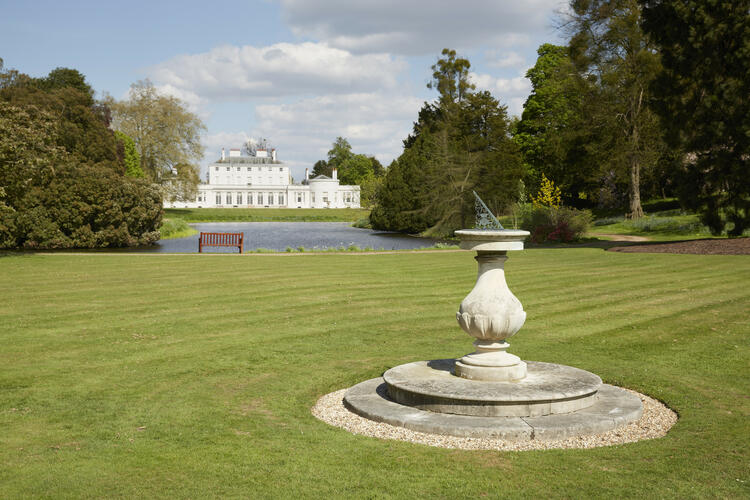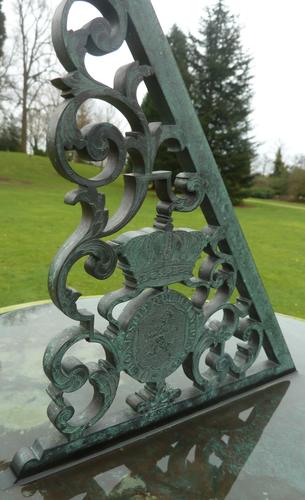-
1 of 253523 objects
Sundial 1831-65
York stone, bronze | 132.5 x 240.0 x 240.0 cm (whole object) | RCIN 60752
-
A carved York stone baluster-shaped pedestal with stepped base and bronze sundial.
The dial plate shows the time at various international ports and settlements, including 'Pekin', Siam, Bengal, Fort St. George, Samarcand, Ispahan, Babylon, Aleppo, Smyrna, Buda, Danzig, Rome, Paris, Seville, Lisbon, 'Rio Janeiro', Cape Farewell (Greenland), Vera Cruz, Compostela, amongst others.
The gnomon is supported by a scrolling pattern and the lion rampant emblem of Belgium, surrounded by the Garter motto and surmounted by the royal crown of Belgium. The inclusion of the latter suggests the dial must date from after April 1831, when Prince Leopold of Saxe-Coburg-Saalfeld was invited by the Belgian government to assume the title 'King of the Belgians'. He retained ownership of Claremont until 1865, lending it regularly to his cousin, the future Queen Victoria, and her mother, after which date Queen Victoria purchased the estate. Claremont passed out of royal ownership in 1922.Provenance
Originally stood in the centre of the walled gardens at Claremont House, Surrey. Purchased by Queen Mary in 1931 from Horace Wright, after he placed an advertisement for the sundial in The Times 'To Americans - unique OLD SUNDIAL formerly in Royal Gardens. Beautiful Pediment. Pointer supported by Royal Arms of England (sic) - write Box V904, The Times, EC4'. The advertisement was seen by Sir Owen Morshead, Royal Librarian, who drew it to the attention of Queen Mary. The pedestal came with the sundial.
-
Medium and techniques
York stone, bronze
Measurements
132.5 x 240.0 x 240.0 cm (whole object)



